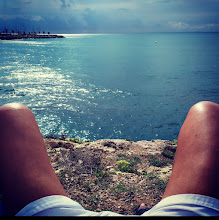miércoles, 13 de noviembre de 2024
JOHN KOCH 1909-1978 Toledo,Ohio, US 2
John Koch (August 18, 1909 — April 19, 1978), (pronounced "KŌK") was an American painter and teacher, and an important figure in 20th century Realism. He is best known for his light-filled paintings of urban interiors, often featuring classical allusions, many set in his own Manhattan apartment.[1][2]
His work is in the collections of prominent American museums, including the Metropolitan Museum of Art, the Smithsonian American Art Museum, the Whitney Museum of American Art, the Brooklyn Museum, the Museum of Fine Arts, Boston, and many others
He was born in Toledo, Ohio, to Marian Joan and Edward John Koch, and grew up mostly in Ann Arbor, Michigan. During his high school years he spent two summers at an artists' colony in Provincetown, Massachusetts.[4] He moved to New York City in 1928, where he met and became friends with Dora Zaslavsky, a talented piano teacher, four years his senior.[5] He moved to Paris, where he spent five years studying on his own, copying paintings at the Louvre and other museums, and supporting himself by painting portraits.[5]
He returned to New York City in 1934, where Zaslavsky was teaching at the Manhattan School of Music and waiting for her divorce to be finalized.[5] They were married on December 23, 1935.[6] The Koch marriage was childless, which may have been a cause of regret—his 1955 painting Father and Son depicts him turning from his easel to see himself as a boy lying on the floor and sketching.[7]
Koch was drafted into the US Army in 1943, but wound up doing alternative service in New York veterans hospitals.[8] He taught at the Art Students League of New York, 1944–1946.[9] After World War II he became a featured artist at Portraits Incorporated, which managed commissions and charged up to $10,000 for a group portrait by him.[10][a]
In 1953, John and Dora Koch bought a 14-room apartment on the tenth floor of The El Dorado, a building at 300 Central Park West.[4] They soon bought an adjacent apartment for Dora's piano studio.[5] After the death of Koch's mother, his father came to live with them,[5] and appeared in individual portraits[12] and some of the group portraits.[13]
Koch suffered a stroke in 1975, that paralyzed his right hand and forced him into a wheelchair.[4] He recovered some use of his hand, but died following another stroke in 1978.[4]
Koch's early work may be considered Impressionist. A review of his 1943 one-man show at Kraushaar Galleries praised his "throwing off his Renoirish tendency and asserting himself on his own".[8] Much of his mature work is made up of portraits and social scenes, including cocktail parties and scenes with the artist at work with his models. The models are often but not always nude.[15]
Koch has developed a soft and luminous style of underpainting in egg tempera and glazing with misty oils to create a cool and ingratiating effect vaguely reminiscent of the seventeenth-century Dutch master Vermeer. He paints mostly portraits of wealthy New Yorkers, at $3,000 and up, set in the elegant interiors that best become them.[16]
His Portraits Inc. commissions included Family Group (1951, Smithsonian American Art Museum), John and Barbara Wood and their two sons;[17] Roosevelt Ladies at Oyster Bay (1953, private collection), Mrs. Quentin Roosevelt II, her three young daughters, and a friend;[b] and a c.1954 double portrait of composer Richard Rodgers and his wife, designer Dorothy Rodgers.[4] Publisher Malcolm Forbes commissioned two group portraits: The Forbes Family (1956, private collection)[18] and The Forbes Family at Dinner (1966, private collection).[19] The Forbes Magazine Collection also purchased numerous paintings by Koch.[20] Both Koch's 1955 portrait of Great Britain's Princess Margaret[21] and his 1966 portrait of actress Julie Andrews[22] are in the collection of the National Portrait Gallery.
Cocktail Party (1956), is perhaps Koch's most famous work.[10] "The party he portrayed occurred only in his imagination, although its attendees were all acquaintances of the Kochs in the mid-1950s. Each was painted from life at separate sittings, and placed by Koch into his immaculate new living room at the El Dorado, with the painter and his wife as the consummate hosts. John stands at the bar, self-consciously reflected in a mirror as he pours one of his famous martinis; Dora bends forward to attend to the seated music critic Noel Strauss."[5] The painting also is an example of his games-playing with spaces and objects: "Koch often shifted the location and appearance of his precious objects in his paintings. A couch might be burgundy in one work and navy blue in another. A door might lead to a bathroom or a bedroom, depending upon the needs of the composition. In this instance, the painting over the mantle is a Tiepolo entirely of Koch's creation. Tiepolo never painted it, and the Kochs never owned it. Nonetheless, Koch thought it was a fine placement for a Tiepolo such as this one, and so here it is."[5]
https://aglutinart.blogspot.com/
Suscribirse a:
Enviar comentarios (Atom)
LUIS COHEN FUSÉ 1944-2019 Buenos Aires
« Ser artista es trabajar todos los días, tener un momento de inspiración y muchas horas de esfuerzo y transpiración. » Luis Cohen Fusé e...

-
“THE UNBEARABLE INDIFFERENCE” BY MIGUEL TADEO, NEW LGTBIQ EXHIBITION OF TRANSSEXUALIA IN CASA DE VACAS TRANSEXUALIA.ORG • JUNE 28, 2024 •...
-
Mario Moore, a Detroit native, received a BFA from the College for Creative Studies, Detroit, MI in 2009 and an MFA in Painting from the ...
-
weyrhere - weyrq nsfw X https://twitter.com › weyrhere Art! This is the NSFW account. I use AI tools and digital painting, no images ar...

































No hay comentarios:
Publicar un comentario